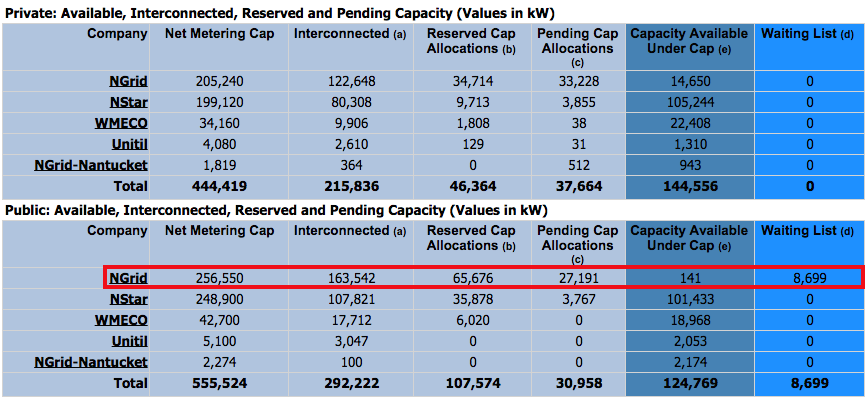Nearly two years after its launch in April 2014, the MA Solar Carve Out-II (SREC-II) program is steadily approaching the 1600 MW capacity cap. As successor to the SREC-I program, the SREC-II program has provided market-based incentives to support solar photovoltaic (PV) development in the Commonwealth of Massachusetts. The SREC-II program was designed to support 946.2 MW of installed capacity (1600 MW less the final 653.8 MW capacity installed under the SREC-I program). The Massachusetts Department of Energy Resources (DOER) included provisions in the SREC-II program to establish set-asides for Small Generation Units when sixty percent of the program’s capacity had been allocated. As of January 4, 2016, the DOER has qualified or approved 575.1 MW (over sixty percent) of SREC-II’s capacity, leading them to revise the Assurance of Qualification Guideline and formally announce a 120 MW set-aside for systems with nameplate capacities of 25 kW or less.
With more than 575 MW of qualified capacity to date, there is roughly 370 MW left until the program reaches capacity. The 120 MW set-aside for Small Generation Units leaves approximately 250 MW for all other systems to be qualified under SREC-II. The DOER announced that, once it issues Assurances of Qualifications and Statements of Qualification (SQA) for a combined 1,480 MW of capacity under the SREC-I and SREC-II programs, all applications for projects larger than 25 kW will be queued on a waiting list for available program capacity. As a reminder, the waiting list for prospective SREC-II systems is prioritized by the date on which the complete and correct SQA was submitted. Applications submitted on the same day are then prioritized by the execution date of the system’s Interconnection Service Agreement. In the event that two or more complete SQAs are submitted on the same day and with identical Interconnection Service Agreement dates, the DOER will finalize the queue through random selection.
In addition to establishing the Small Generation Unit set-aside, the DOER also clarified in its revised guideline: (1) what constitutes a complete SQA, (2) the procedure for qualified generation units to withdraw their Assurance of Qualification, and (3) the correction process and timeline for applications that are found to be incomplete upon submission.
In light of the program hitting its sixty percent capacity mark, facility owners and managers should be prepared to submit applications as the SREC-II program nears its final capacity. SRECTrade will continue to monitor and report on the status of the SREC-II program and provide information about successive programs. The combined success of the SREC-I and SREC-II programs in supporting distributed solar PV development suggests that the implementation of a third SREC program will further bolster the MA distributed solar industry. Issuing SRECs to solar PV system owners for every megawatt-hour (MWh) of solar energy they generate has helped MA become a national leader in solar.
To view the original notice from the DOER click here.
Tweet

